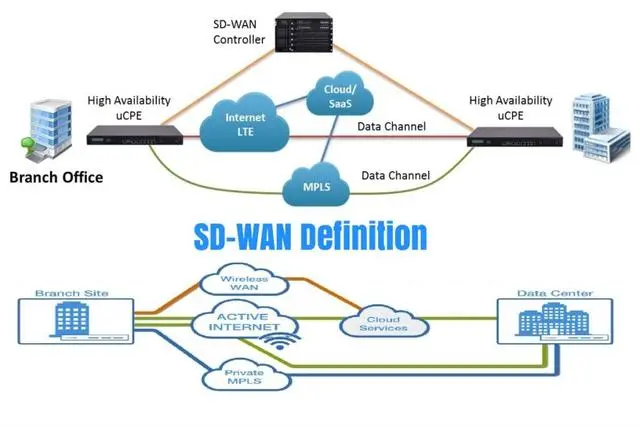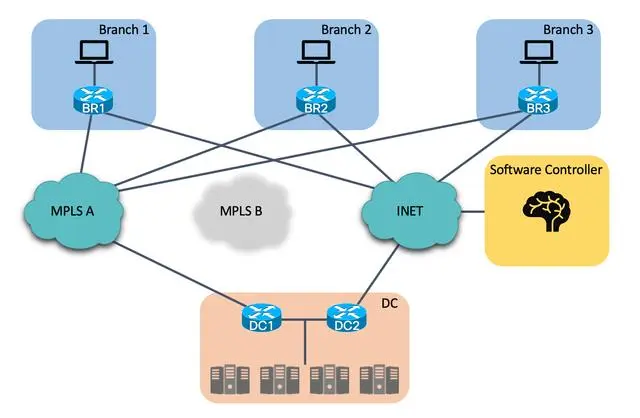SD-WAN (Software-Defined Wide Area Network) is a technology that centrally manages multiple WAN connections and optimizes application traffic to improve network performance and security.
SD-WAN brings software to the network so that enterprises can configure network connections at branch offices around the world through software programs without having to set up hardware or network equipment at the branches. SD-WAN draws on the concept of software-defined networking (SDN) to provide wide area networks with the flexibility and security similar to private data center networks.
01. Advantages of SD-WAN
● Flexibility
SD-WAN provides more flexible configuration options through virtual link and tunnel technology. Users can choose to route all traffic through the SD-WAN central hub. It is also possible to route some specific traffic through the enterprise's private network and directly into the Internet.
The architecture of SD-WAN is also more flexible, it can be deployed with physical or virtual devices, and can be configured for centralized management or split deployment.
● Scalability
SD-WAN is easily scalable and can support increasing the number of users as well as increasing the number of locations. SD-WAN Manager can manage thousands of nodes.
Since SD-WAN targets branch connections, when branches are added or changed, SD-WAN can simplify these operations by operating on the cloud. This makes it easier to add new locations without the need to manually configure routers at each branch like traditional VPN solutions.
● Security
SD-WAN can ensure security through measures such as Transport Layer Security (TLS) protocol and gateway protection. Traffic is encrypted to ensure that transmitted data cannot be seen by others, and VPN functions can also be provided to ensure data security.
SD-WAN can also provide security solutions based on authentication, authorization, access control and failure recovery.
● Improve performance
SD-WAN improves performance in two ways. The first way is to improve network performance through mechanisms such as traffic optimization, dynamic adjustment of load balancing, and selection of the best connection. These mechanisms help dynamically distribute traffic across multiple connections to ensure optimal network performance and availability.
The second way is by providing the shortest path to the cloud service provider, thereby reducing latency and jitter. These techniques can improve the performance of your application.
02.SD-WAN helps enterprises
● Reduce network costs
SD-WAN uses a centralized management approach to save costs and resources. Branch networks using SD-WAN can be consolidated in the enterprise's data center, so that cheaper Internet connections can be used to replace expensive dedicated line connections, further reducing operating costs.
● Enhance network performance
SD-WAN can provide faster switching times and load balancing, thereby improving branch and application performance. SD-WAN adaptively routes application traffic and network traffic and ensures network connectivity availability. Additionally, the technology can make networks more reliable and fault-tolerant. This means that even if one connection fails, it will be able to continue running on the backup connection.
● Better security
SD-WAN provides strong security. Compared with traditional VPN solutions, SD-WAN can encrypt data packets directly, making it more secure. SD-WAN also provides real-time monitoring and tracking so IT departments can respond quickly when risks arise.









